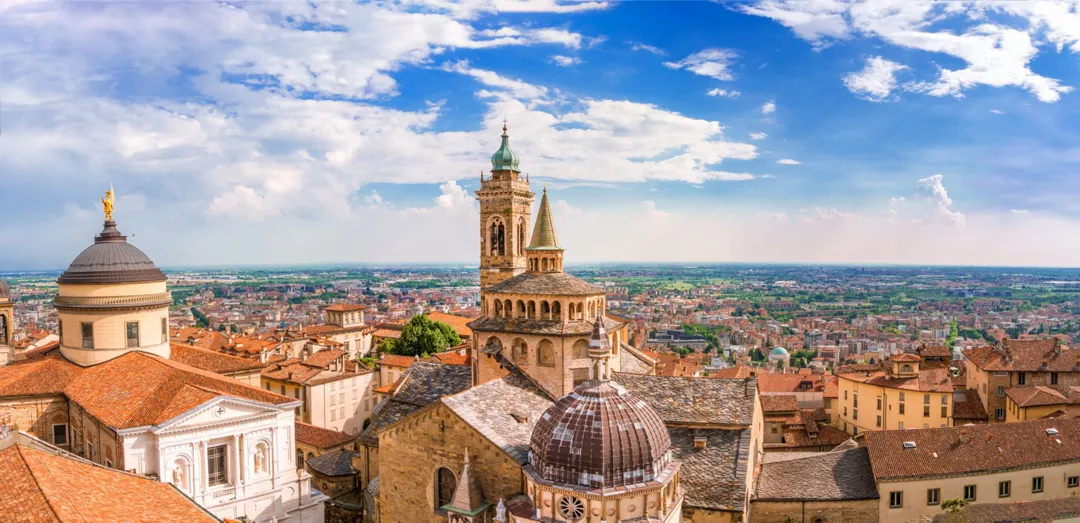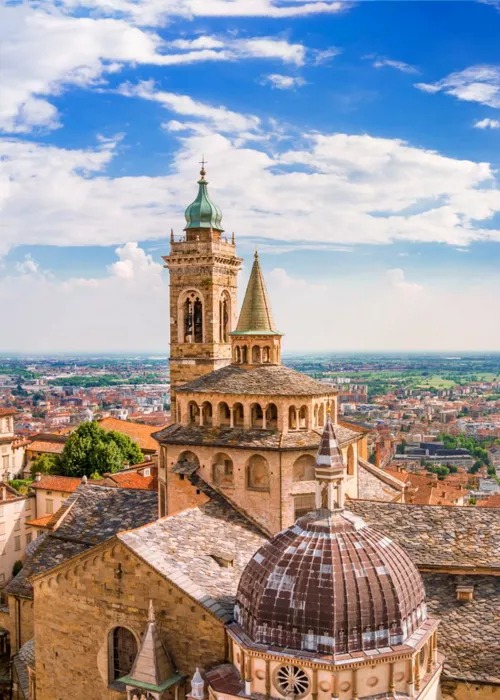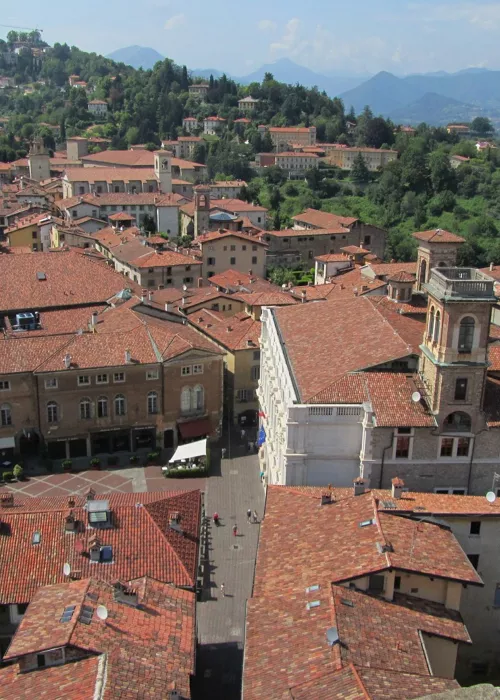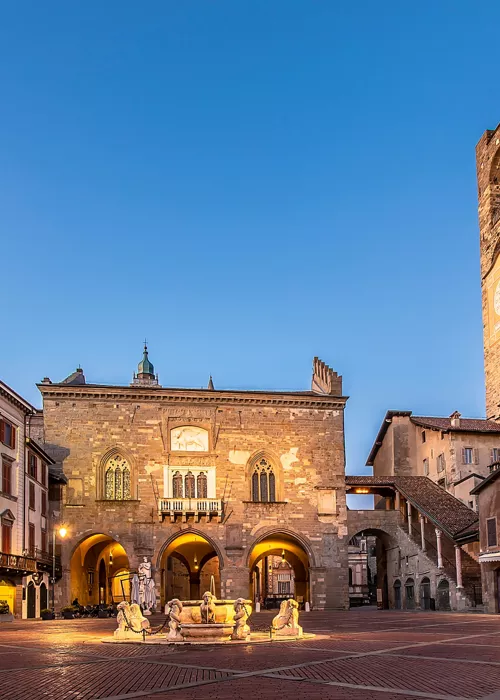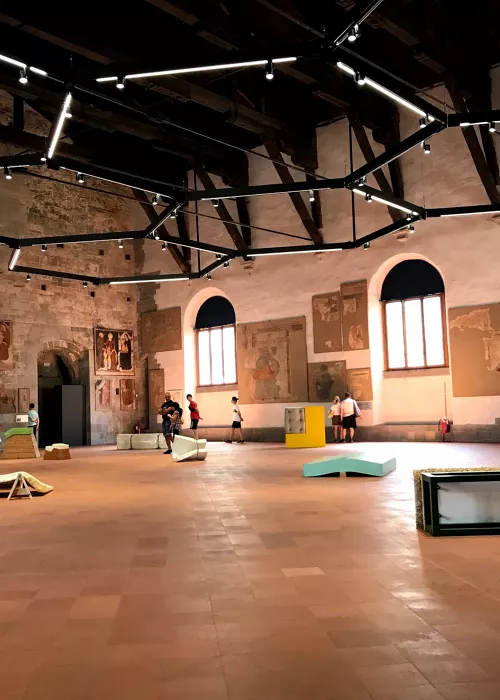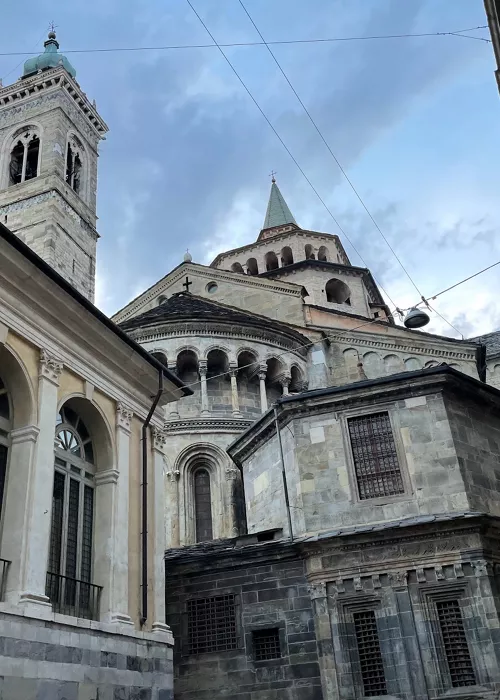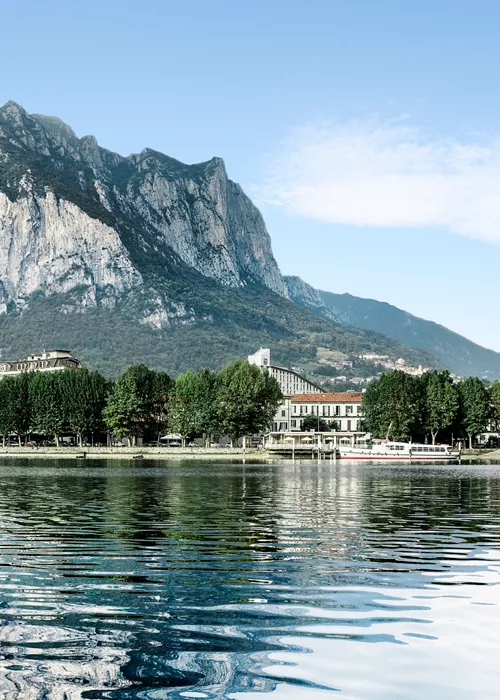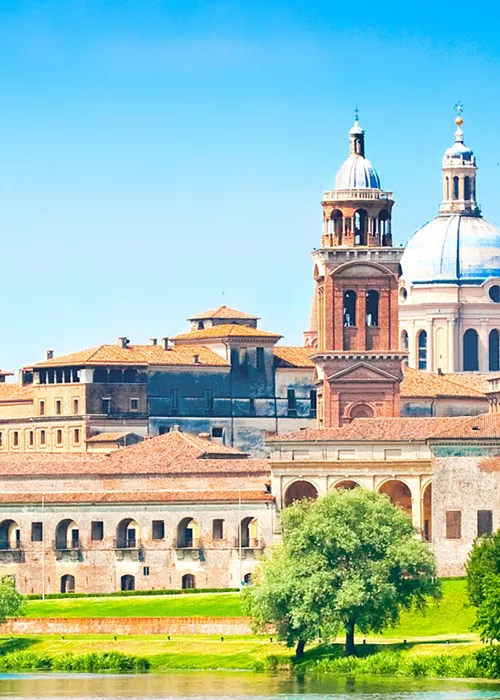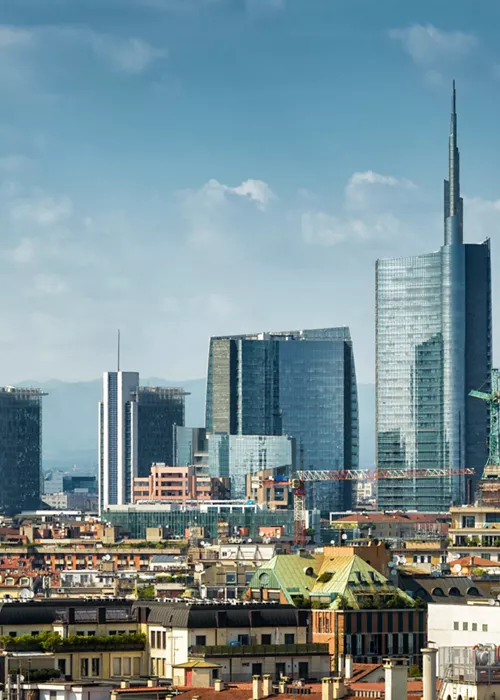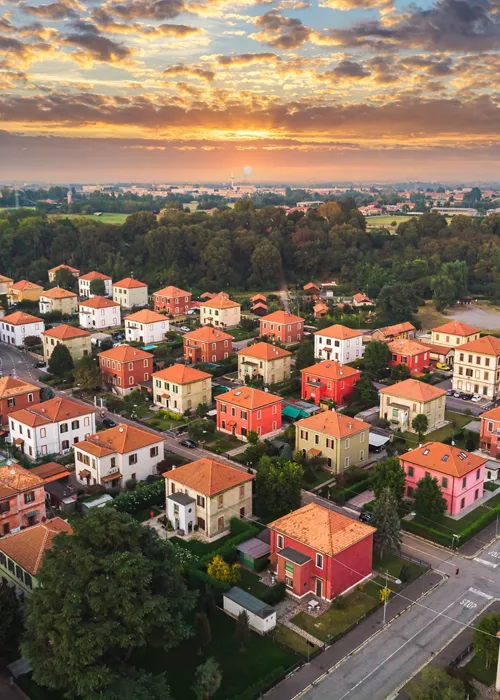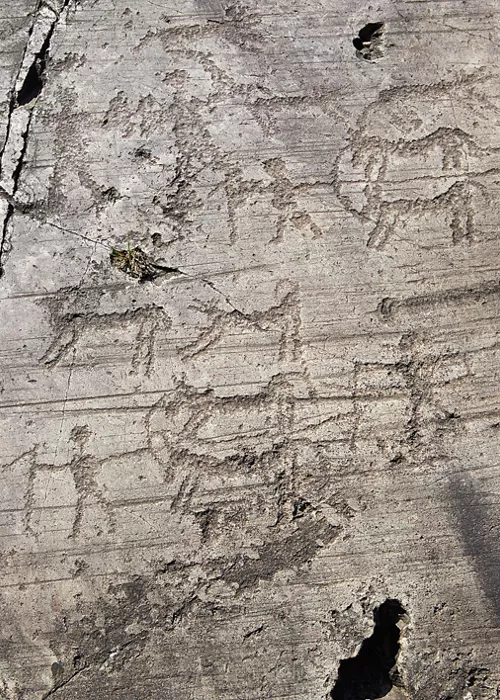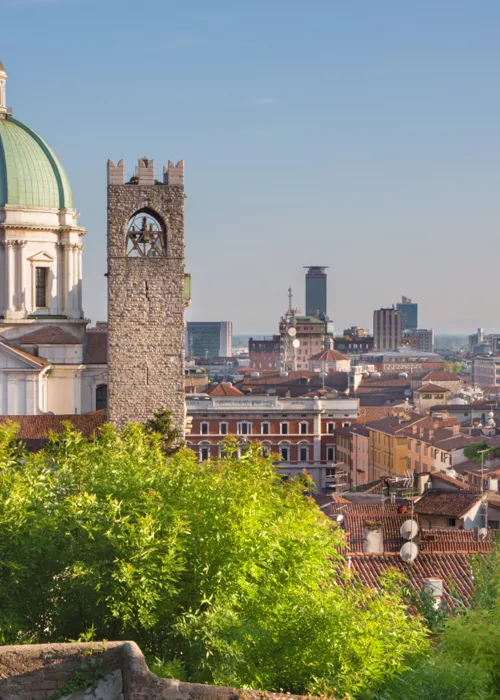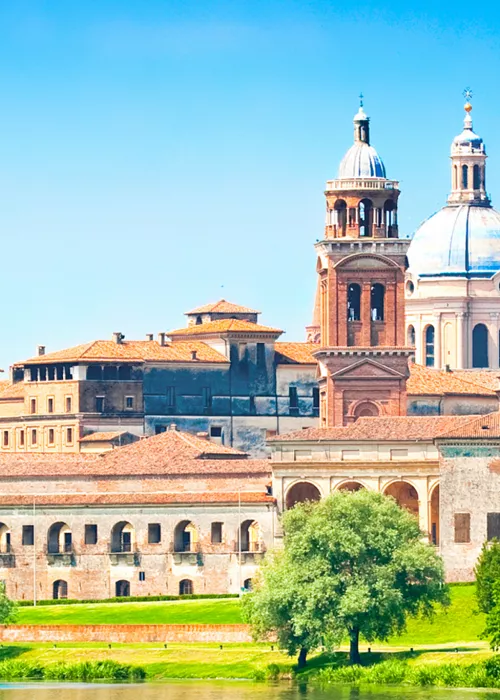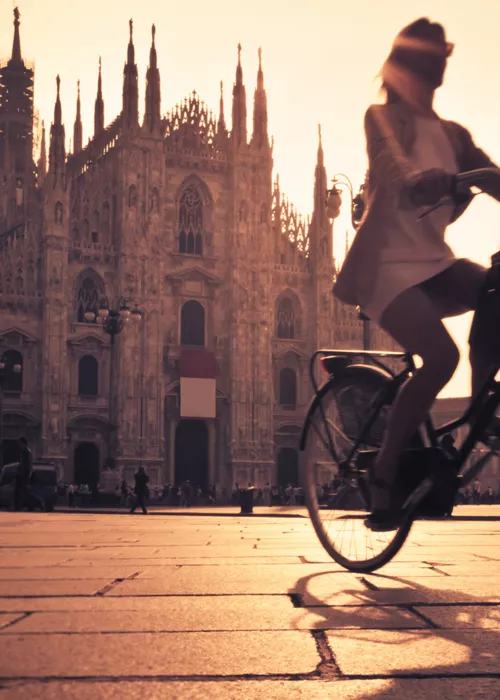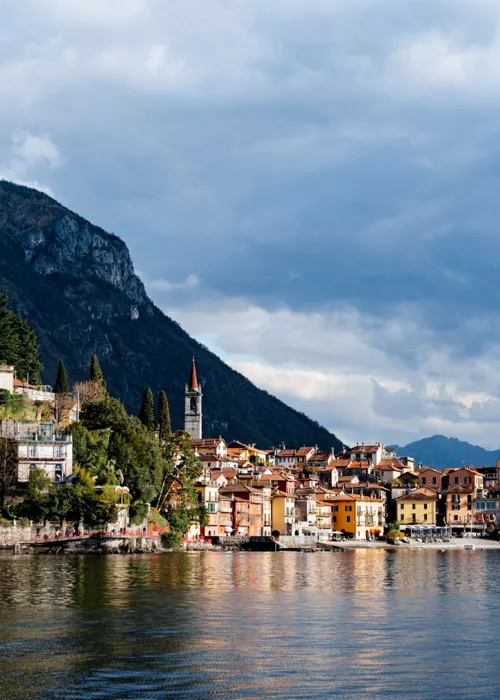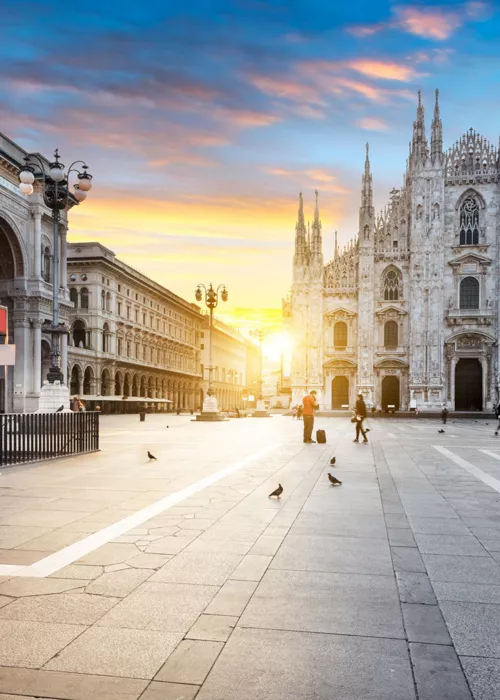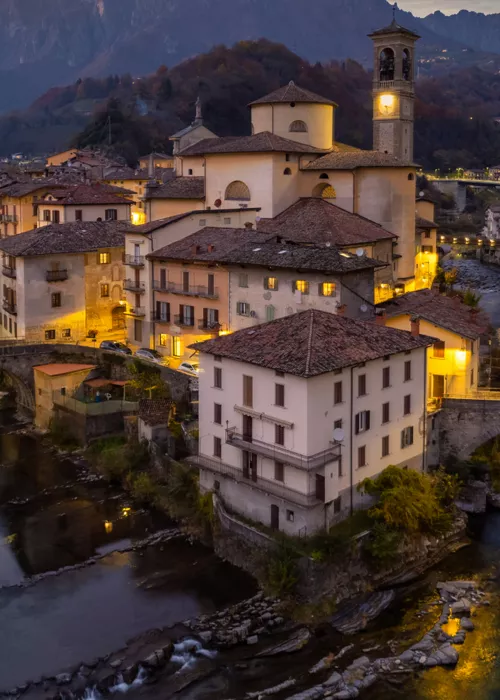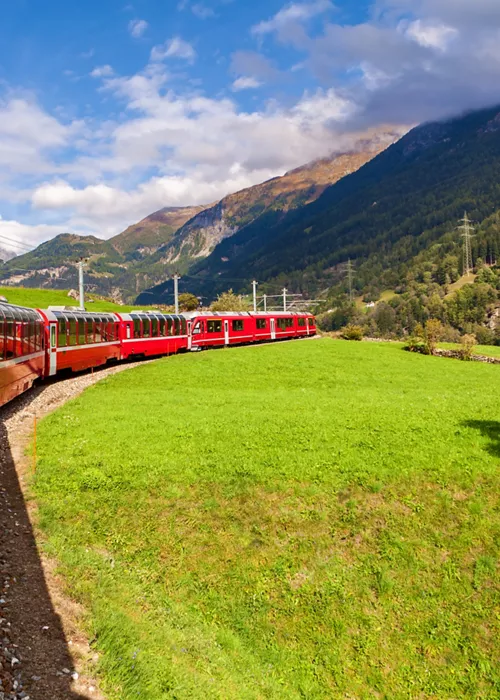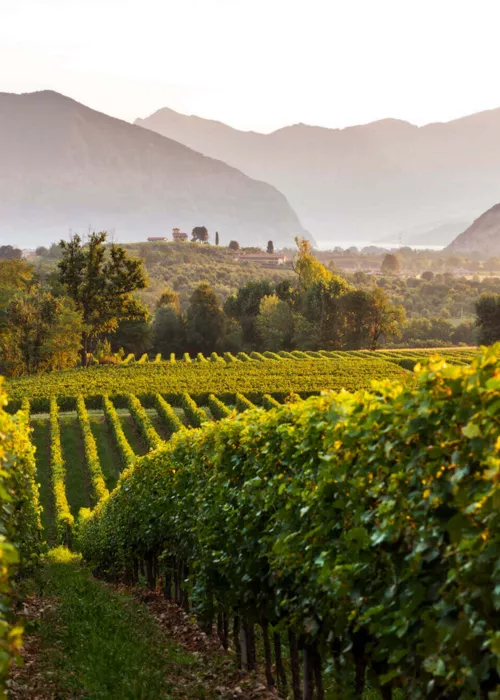Bergamo, medieval heart, contemporary soul
4 minutes
A rich history that includes opera music, a characteristic landscape and a medieval heart perched on a hill, surrounded by the Venetian Walls now a UNESCO World Heritage Site.
Discover it on foot to fully appreciate every nuance: the musical masterpieces - it is the city of Donizetti, one of the five great opera composers in the world; the artistic ones of Mantegna, Botticelli, Raphael and Bellini; and the architectural ones with its bastions built in the 16th century.
A journey through history, good food and all-round beauty.
The history and magic of Bergamo
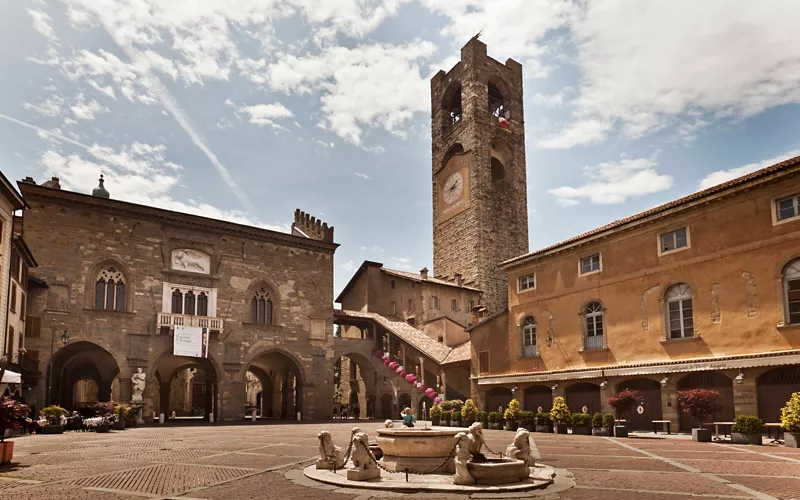
The history of Bergamo has distant origins as an Orobi settlement. It became a Roman municipality from 49 BC, but sacked repeatedly with the fall of the Empire.
Medieval Bergamo saw the flourishing of powerful Lombard families, known for having divided the urban territory into two royal districts. From 904, Bishop Adalbert gave the city years of improvements and renovations, but from 1098 it was a Free Commune and, after several wars against Brescia, it joined the Lombard League against Emperor Frederick Barbarossa. From the 13th century, while battles raged between Guelphs and Ghibellines, the city became an influence of the Visconti of Milan, who fortified the Citadel.
Having become part of the Venetian Republic's dominions, the Venetians rebuilt the old city, erecting imposing defensive walls. Venetian rule ended with the Napoleonic era, which came after the short-lived Bergamasque Republic, the Cisalpine Republic and the Kingdom of Italy. With the Restoration, Bergamo ended up in the Austrian sphere of the Lombardy-Venetia Kingdom, which ensured an initial industrialisation of the Bergamo area thanks to textile manufactures.
The city experienced a fervent Risorgimento: Garibaldi, head of the Cacciatori delle Alpi, triumphantly entered Bergamo, ending foreign domination. In 1860, Bergamo contributed the largest number of volunteers to Garibaldi's expedition, earning it the title “City of the Thousand”. In 1860 Bergamo joined the Kingdom of Italy.
What to see in Bergamo: 3 unmissable sites
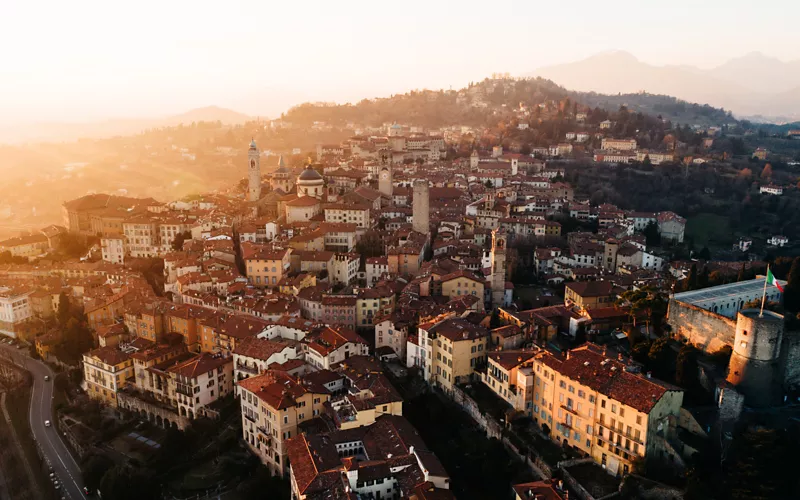
The historic heart, walls, bastions, historical palaces and churches: the Lombard city is truly full of priceless attractions. Are you wondering what to see in Bergamo to best appreciate its beauty? There are three must-see sites:
- historical Bergamo: first, we recommend a trip to Bergamo Alta, the historical heart of the charming medieval city. Reaching it is an experience of pure amazement: use the many staircases scattered around the city or the funicular railways that cross the 15th-century walls. Through boutiques, delicatessens, century-old cafés, trattorias and wine bars, don't get too distracted by the sights you can't miss: Piazza Mercato delle Scarpe, Piazza Vecchia, Palazzo della Ragione and Museo degli Affreschi;
- the Bergamo of museums: let's move on to Lower Bergamo, where the Carrara Academy, a must for art lovers, is located. It exhibits an impressive 1,793 paintings of the Venetian, Lombard and Tuscan schools from the Renaissance to the late 1800s. Among the masterpieces inside are Pellizza da Volpedo's Il ricordo di un dolore, Madonna and Child one by Mantegna and one by Titian, Raphael's Saint Sebastian and many more.
- the Bergamo of the Renaissance: the last stop will show you one of the most beautiful examples of Renaissance in Italy. The Colleoni Chapel, to the right of the façade of the Basilica of Santa Maria Maggiore, is the mausoleum of Bartolomeo Colleoni, a mercenary captain who wanted this resting place so badly that he ignored the opinion of the Church of Bergamo, demolishing the old sacristy.
What to do in Bergamo: 3 ideas

What to do in Bergamo for a perfect holiday, surrounded by nature and with an important history? Here are three tips for every need.
An aperitif in Bergamo Alta, an unforgettable experience to enjoy the city’s spirit; a tasting of the wines of Bergamo and the surrounding area, a must for expert palates but also recommended for novices, perhaps with an organised tour of the Lombardy wine cellars.
One of the many possible excursions in Bergamo, through itineraries in the city, towards the mountains and in the direction of the alpine lakes, for those who want to take advantage of their holiday for some cycling in the midst of nature.
What to eat in Bergamo: 3 specialities

Bergamo's cuisine is among the richest in the area. Featuring dishes using local products, it is rich and mouth-watering. If you are wondering what to eat in Bergamo, know that you will be spoilt for choice, so a tip on 3 typical dishes to try right away could prove invaluable.
- First, capù, stuffed cabbage dumplings au gratin in the oven with cheese.
- Then there is polenta taragna, a flavour bomb made from maize and buckwheat flour, generously seasoned with melted butter and cheese to make “polenta onta”, as it’s named here.
- Finally, casoncelli, egg pasta filled with meat, amaretti, parmesan cheese, sultanas and parsley, served with melted butter, bacon and sage.
Unusual places to see in Bergamo
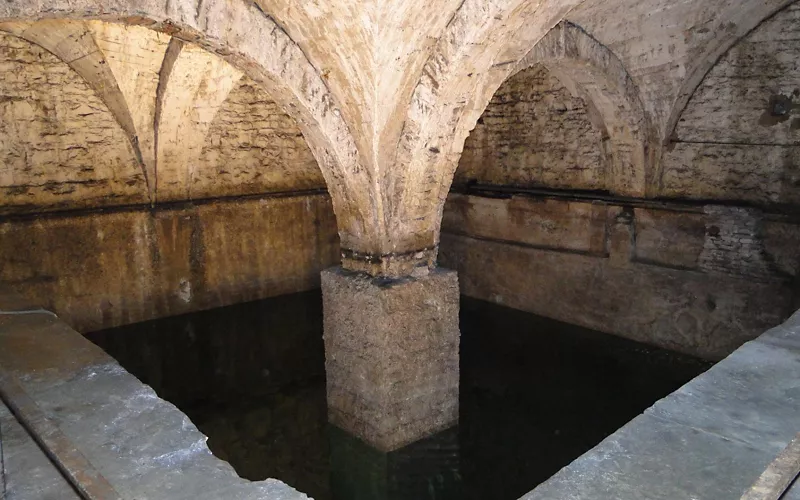
In secluded Bergamo, finding places far from the beaten tourist track is tricky, but surely worth it.
Not to be missed is the Lantro Fountain in the Upper Town, which in ancient times provided water for washing clothes and watering animals.
But also Porta del Soccorso, Bergamo’s door of rescue, fifth secret gate in the city walls: practically anonymous, used by the people of Bergamo to sneak in and out of the city walls, eluding their enemies or taking them by surprise.
Also very interesting is the former Prison of St. Agatha, first a monastery of the Theatine priests, turned into a prison in 1802 from the design by Enlightenment architect, Leopold Pollack.

